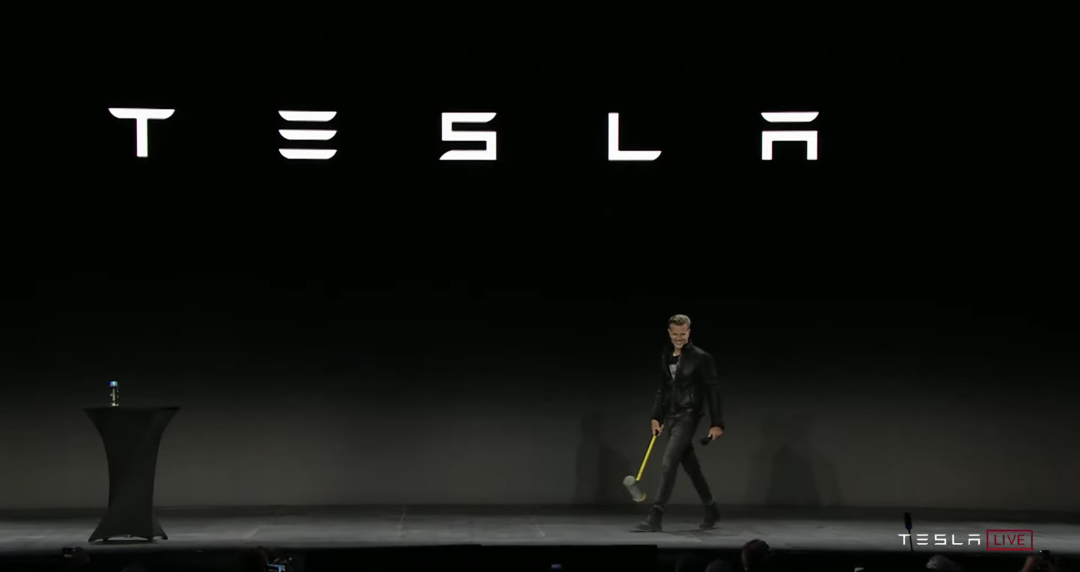On January 28, 2021, 5 months ago, the updated Model S/X with a new interior was officially unveiled in the Tesla 2020Q4 earnings call PDF. With a brand new cockpit, lower drag, stronger power, and longer range, the updated Model S/X immediately burst back to life, followed by the most aggressive wave of orders in the past four years.
A similar situation occurred on August 23, 2016, when Tesla released the Model S P100D with “Ludicrous” mode.
At the 2020Q4 earnings call, Musk confidently stated that the new car would start delivery to US customers in March. However, “Elon Time” never disappoints, and with each delay email sent to reservation holders, the delivery of the updated Model S/X was finally progressing on May 20. Musk announced that the Model S Plaid would begin delivery on June 3.
Today, Musk repeated the statement numerous times that the Model S Plaid is the strongest production vehicle on Earth, and finally the new car delivery ceremony took place at the Fremont factory. However, today is June 10, and due to another delay from Elon Time, the delivery has been postponed for 7 more days.
The delivery ceremony was more like a launch event. At the beginning of the ceremony, Tesla’s chief designer Franz came on stage with the huge hammer that he used to smash the windows of the Cybertruck in a previous event. My first reaction was, “Oh my god, is he going to do something crazy again?”
However, Franz stated that the hammer represented Tesla’s spirit of innovation, and Tesla has once again achieved many breakthroughs in the Model S Plaid. After his speech, Franz went off stage with the hammer, without even using it.
The background music played, the promotional video started, and Elon Musk personally drove a black Model S Plaid with a markedly larger screen size, completed one lap around the factory track before driving onto the stage. Thus, the “Special Edition Launch Event” of the Model S Plaid officially began.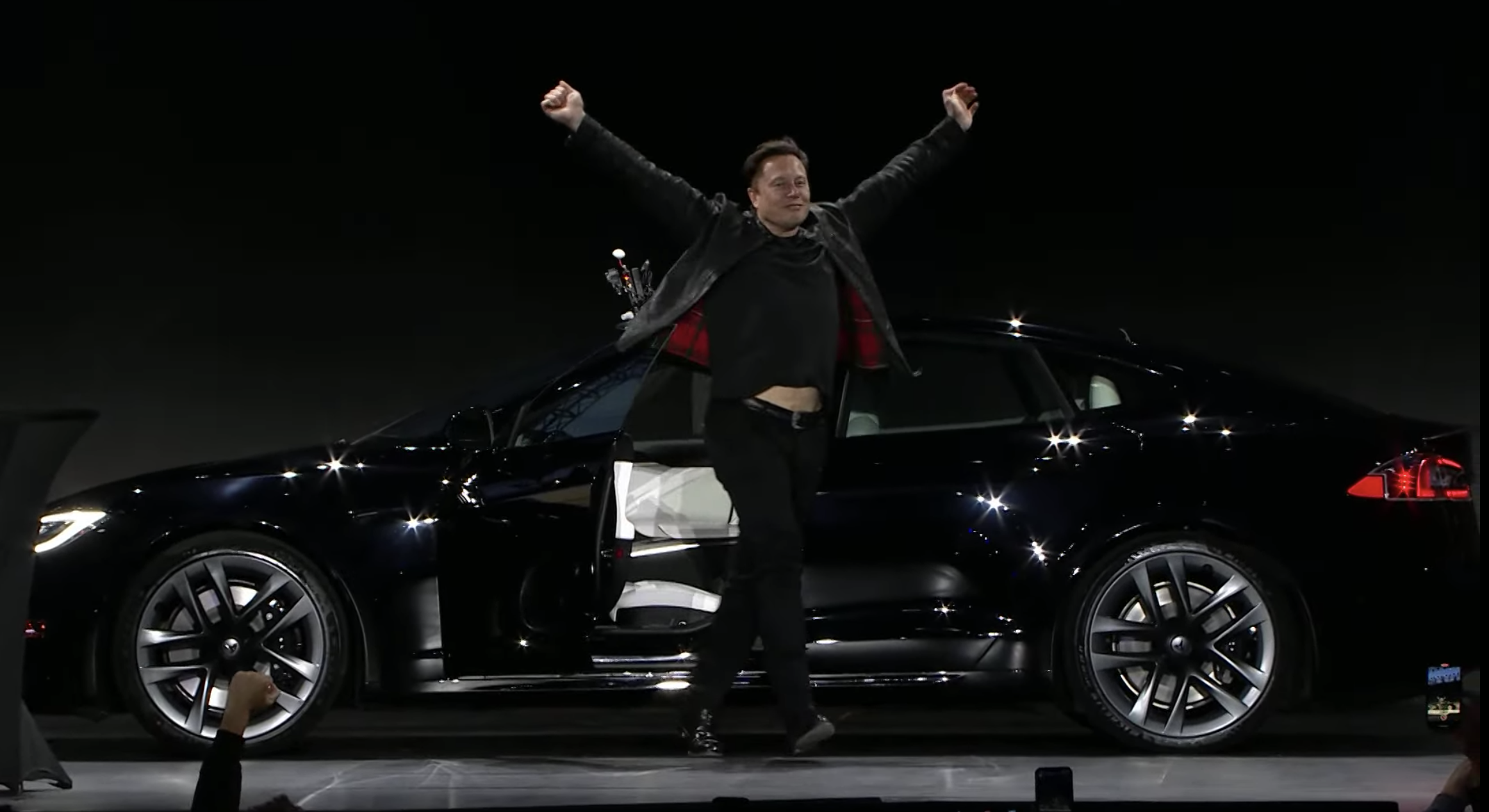
Faster and more outrageous
Tesla’s previous models already had outrageous acceleration capabilities, and the Model S Plaid takes it to a new level. Tesla officially announced a 0-60 mph (96 km/h) acceleration time of 1.99 seconds. Musk stated on the Q4 2020 earnings call and Twitter that the Model S Plaid is the first car in the world to accelerate from 0 to 60 mph (96 km/h) in under two seconds. He reiterated this point in today’s launch event.
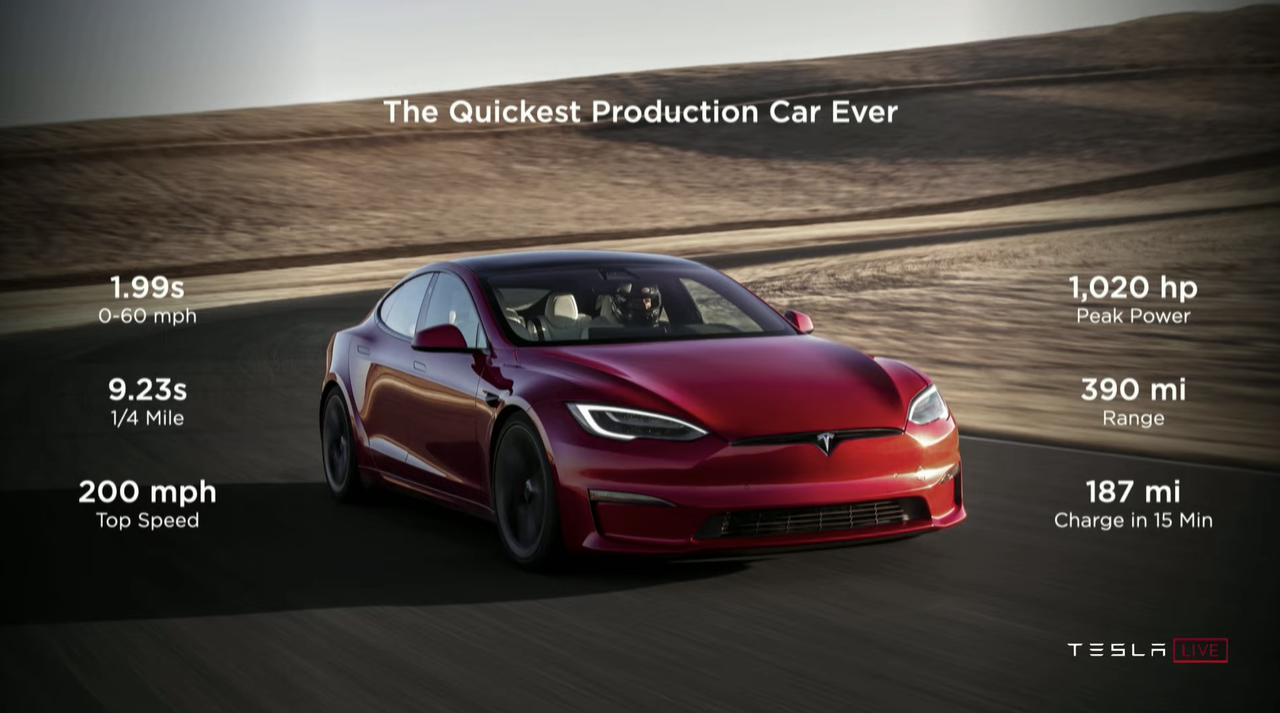
A brand new powertrain that challenges the limits of physics
One of the significant updates of the Model S Plaid is that it uses a brand new powertrain. The power system consists of a front and two rear electric motors, with a maximum output power of 1,020 horsepower.
In addition, thanks to the symmetrical dual-motor layout of the rear axle, the Model S Plaid can control the output of the left and right motors to achieve torque distribution between the left and right wheels. This enables the car to have better grip performance in corners.
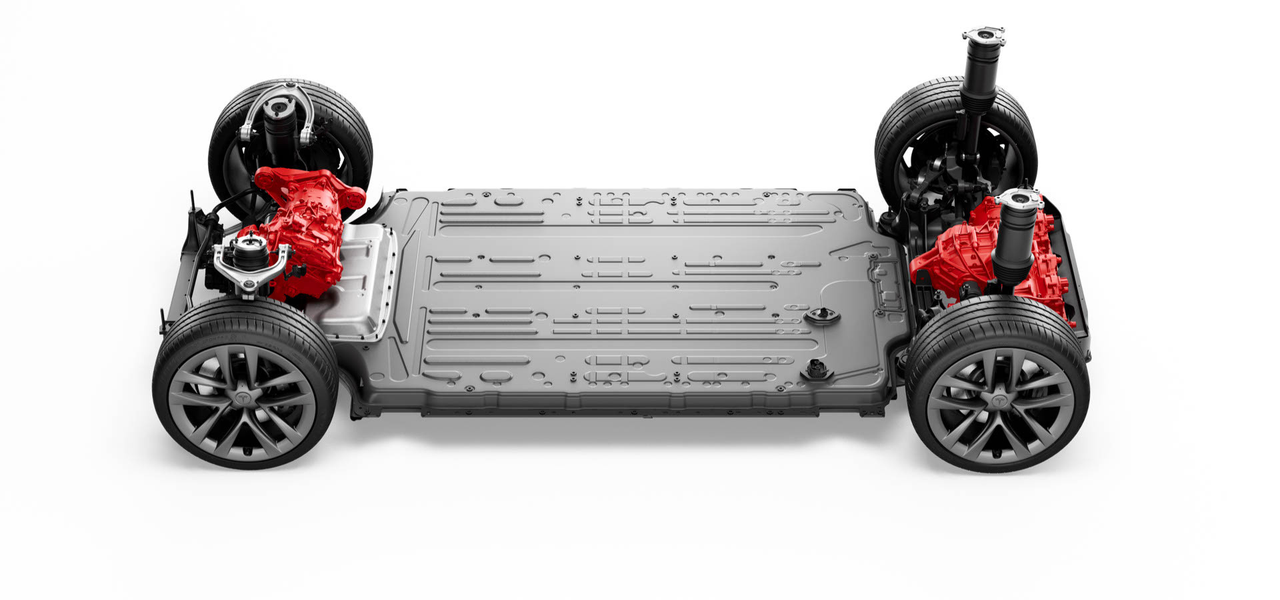
Another point worth emphasizing in the Model S Plaid power system is that all three motors use carbon fiber reinforced rotor sleeves. The reason for doing this is that the motor’s rotation speed in the Model S Plaid can reach over 20,000 rpm, and some of the rotor’s structures have a tendency to “fly off” at such high speeds. To ensure that the rotor does not disintegrate at its limit speed, Tesla has added this reinforcement structure around the rotor.
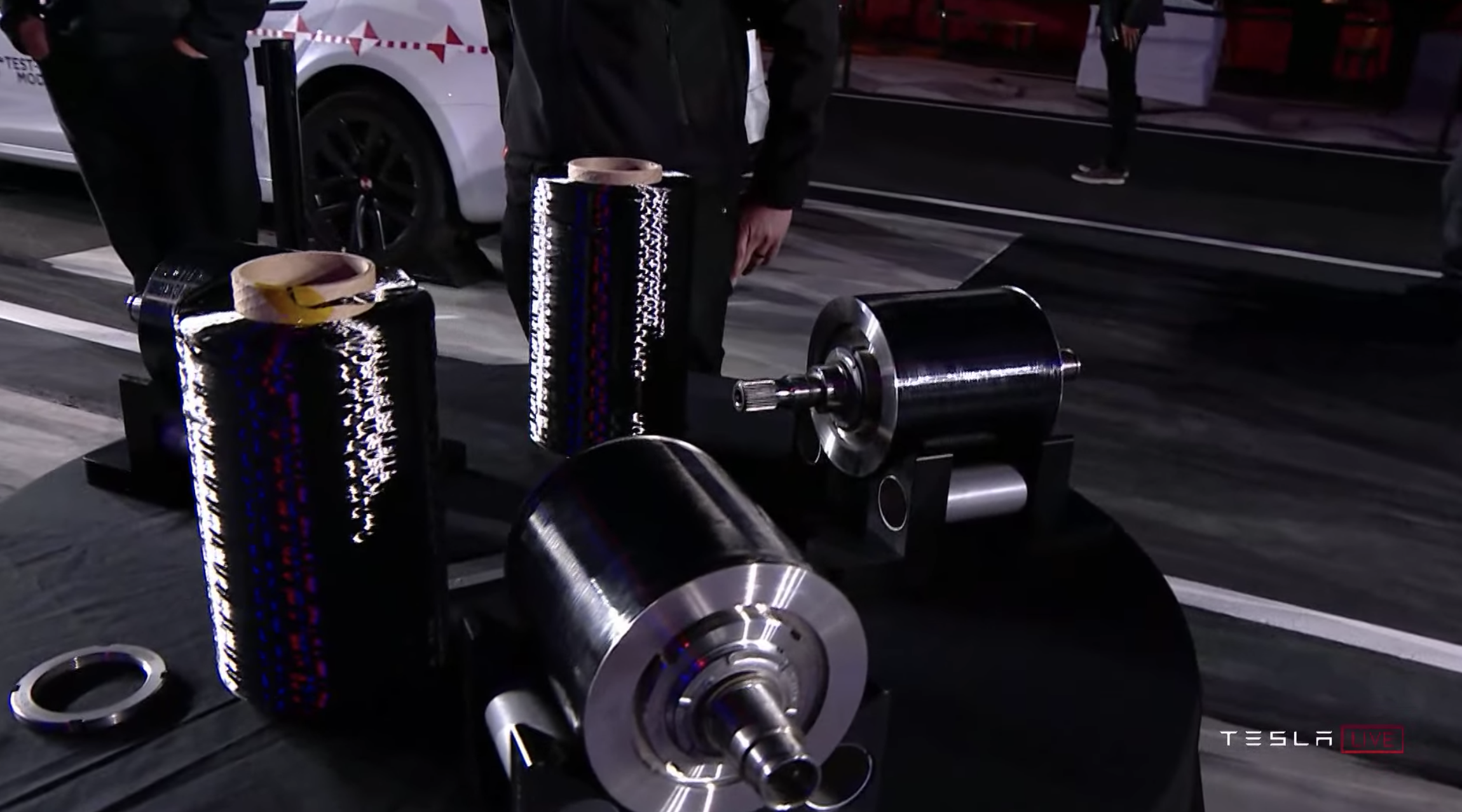
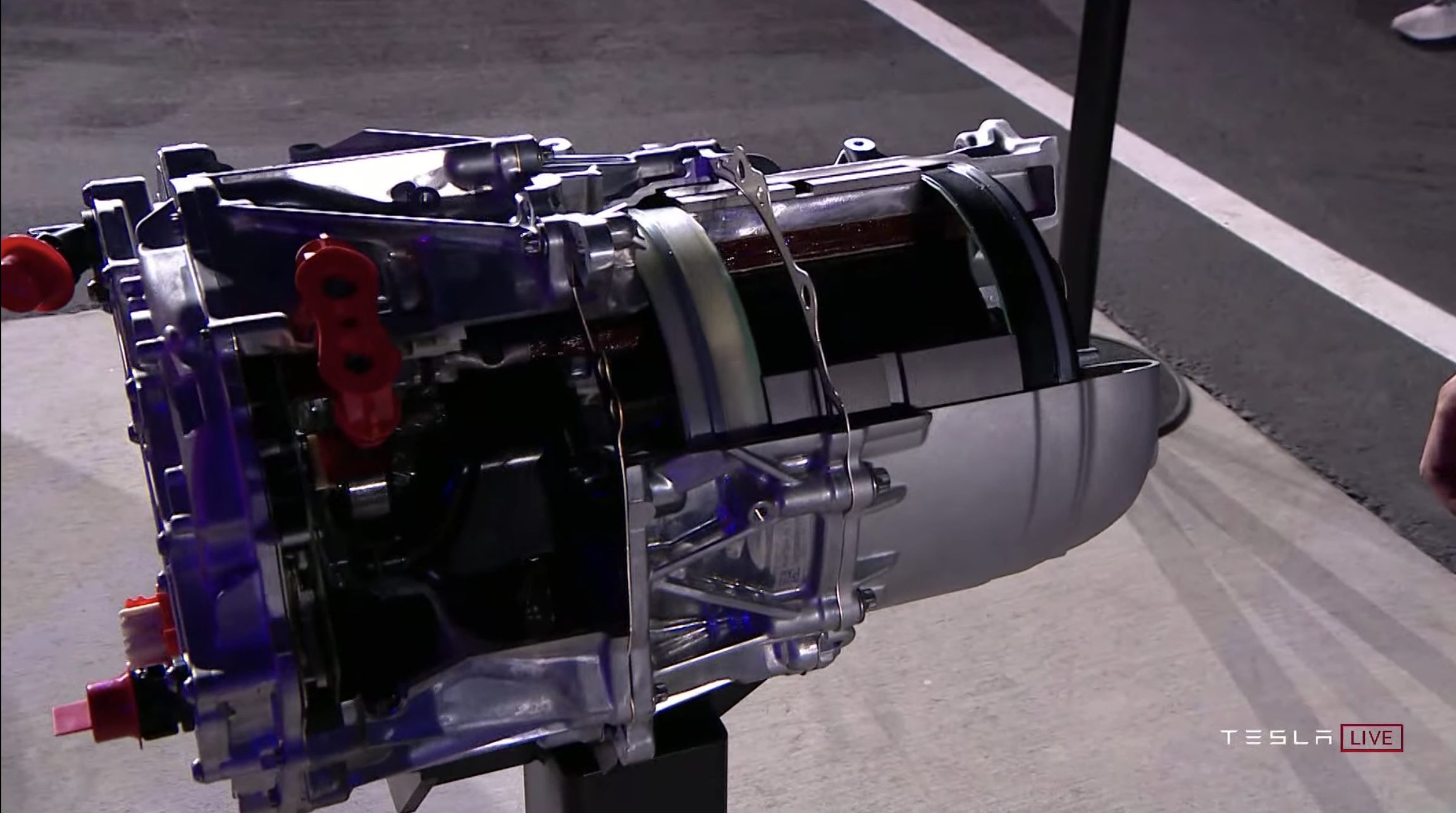
Thanks to the high-speed motor, the Model S Plaid achieves a top speed of 200 mph (about 322 km/h) with only a fixed-gear transmission. On the other hand, the power output of the new motor throughout the entire speed range of the vehicle has also been greatly improved. The power-speed curve is almost flat after reaching peak power near 60 mph, which also means powerful acceleration capability in the rear stage.
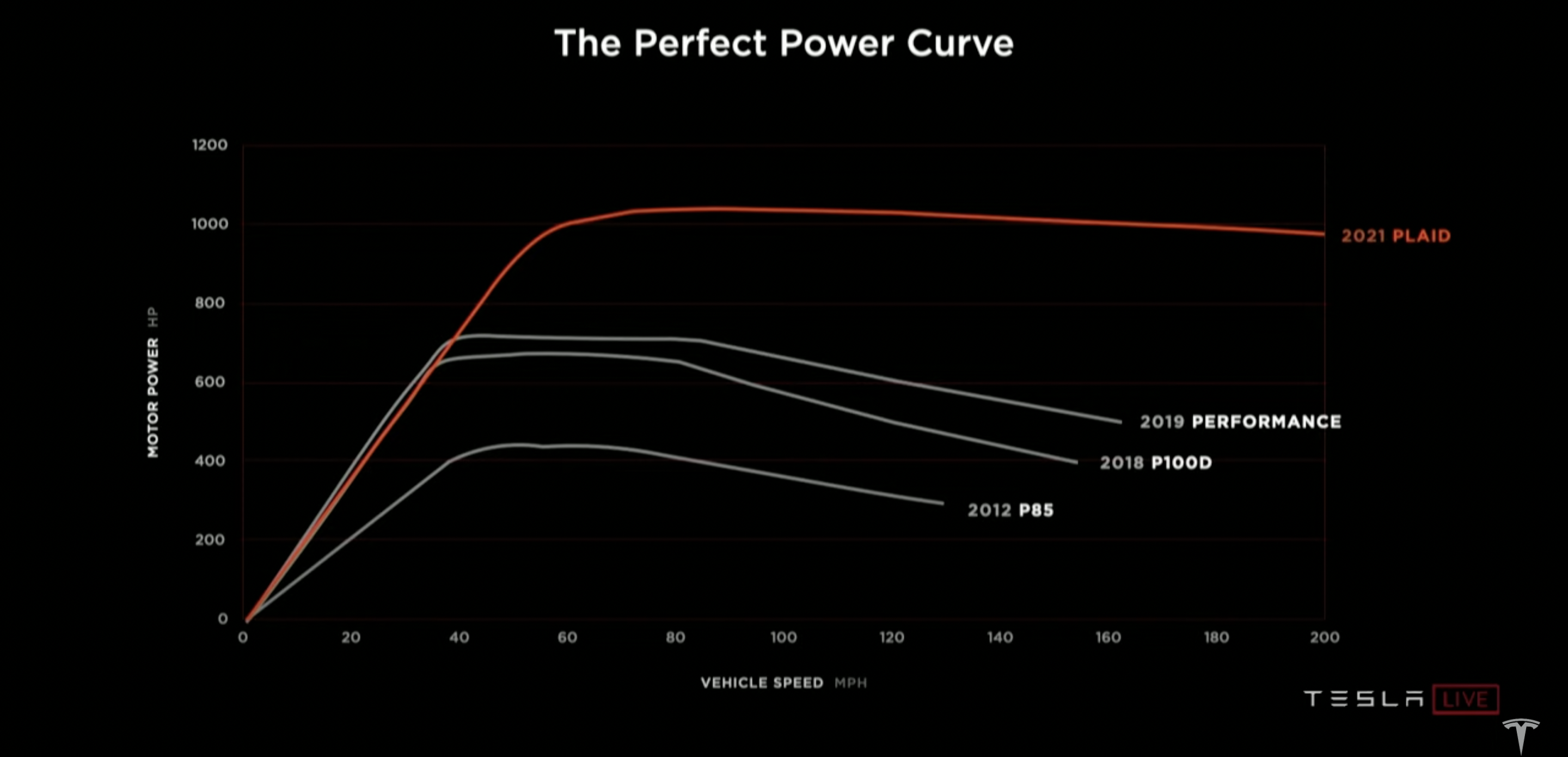
Before the delivery ceremony today, Jay Leno, the American talk-show host and car collector, revealed a set of acceleration results achieved with his Model S Plaid: 0-400 meters in 9.247 seconds and a quarter-mile terminal speed of 152 mph (244.62 km/h). Although this result has not been officially certified, it has already surpassed a series of Hyper Cars including the Ferrari LaFerrari, Porsche 918 Spyder, McLaren P1, and Bugatti Chiron.
Although it may sound a bit sarcastic, Tesla has embarrassed the world’s top supercars in terms of the 0-400 meter acceleration project with a large four-door sedan.
However, in the electric vehicle era, there is more than just Tesla playing straight-line acceleration. A few days ago, the Rimac Nevera, a 1,914 horsepower electric hypercar with 4 motors, achieved a 0-400m acceleration time of 8.62 seconds and a top speed of 171.79 mph (276.47 km/h) under the test drive of Mat Watson on YouTube. Faced with this same category of car with 896 more horsepower, the Model S Plaid may have to learn how to use adjectives from its domestic peers if it still wants to keep its title as the top accelerating car.
Talking about acceleration, Musk once again mentioned the 0-60 mph (96 km/h) acceleration time of 2 seconds today, which reminded me of a controversial topic about Tesla’s exaggerated acceleration performance online, marked with an asterisk of 1.99 seconds.# Response
In addition to being surprised by the officially announced 0-60 mph (96 km/h) time of 1.99 seconds for the Model S Plaid, a YouTube car engineering expert named Engineering Explained noticed something peculiar about the acceleration data on Tesla’s website.
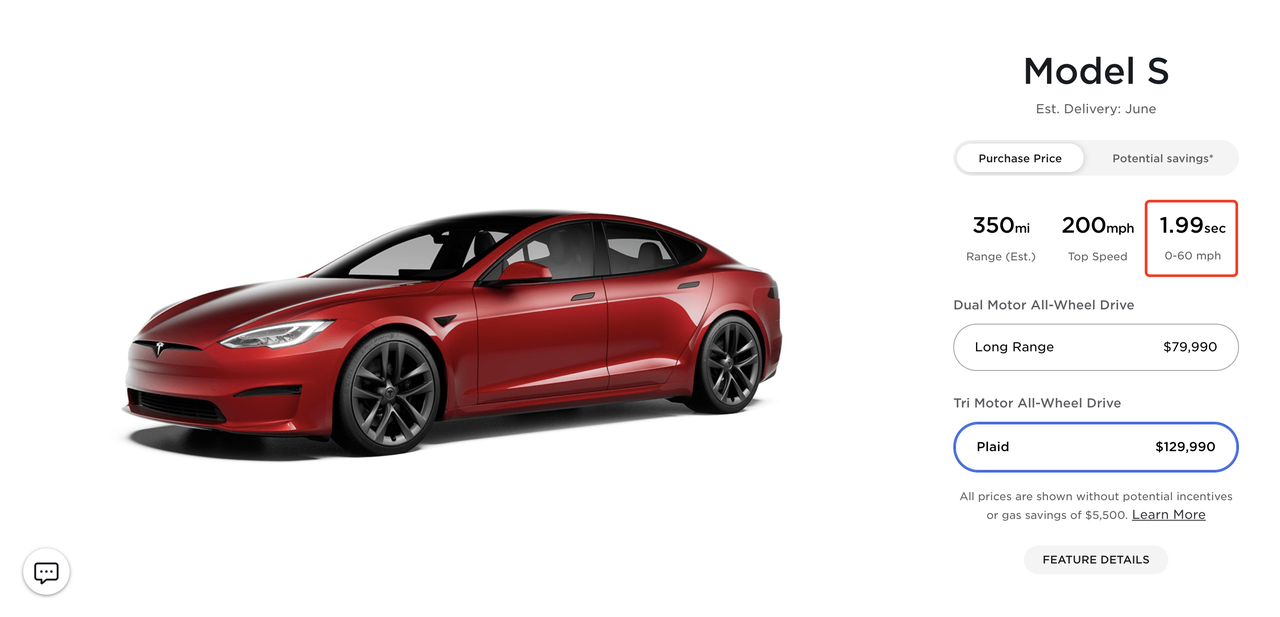
The order page for the Model S Plaid shows the 0-60 mph (96 km/h) acceleration time of 1.99 seconds with an asterisk, which is explained on the page as “not including the first foot of rollout timing.” This is actually a timing rule from professional straight-line acceleration races in the United States, which means that the timer starts counting from the starting line, but since the position of the car cannot be ahead of the starting line, the actual starting point of the vehicle is some distance before the starting line, and this distance is referred to as the “pre-rollout timing distance.”
According to previous tests with different vehicles, the speed of the vehicle passing the timing line under this rule is already close to 9 km/h, and the acceleration time counted from the beginning of the timer is already around 0.2 seconds. Therefore, the data measured under this rule is lower than the true value.
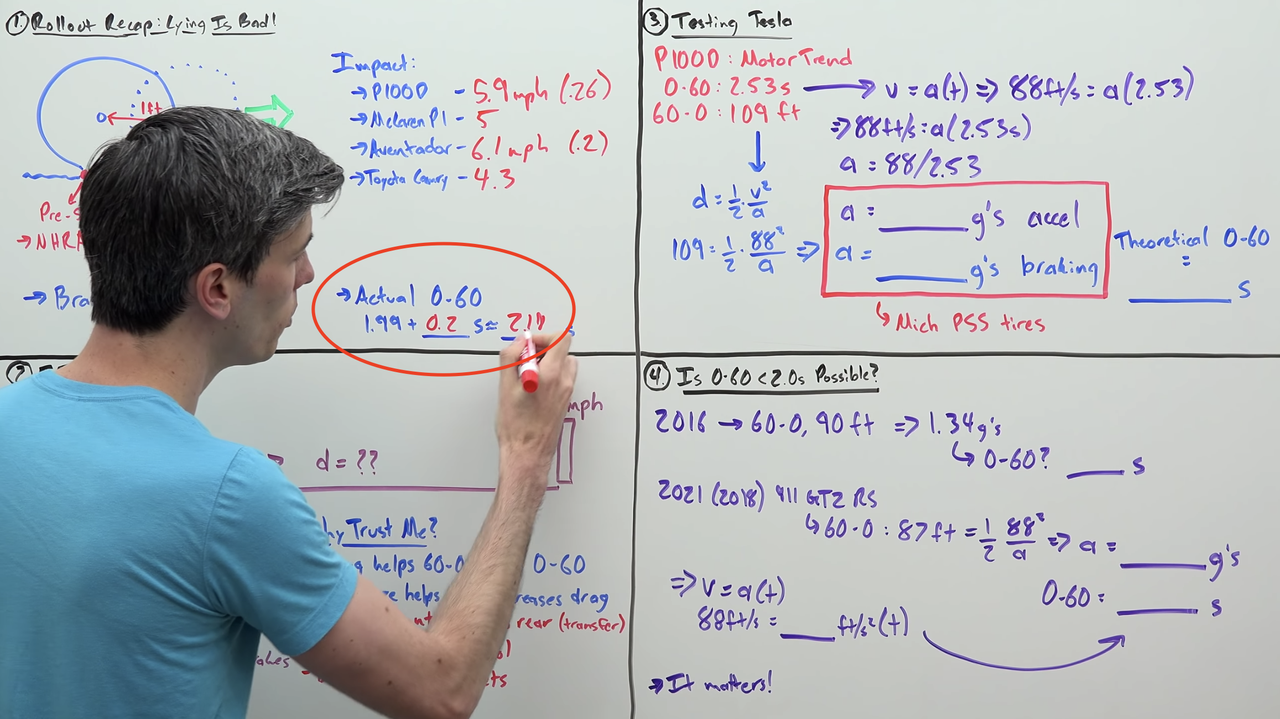
Therefore, after adding this time, the actual 0-60 mph (96 km/h) acceleration time for the Model S Plaid should be around 2.19 seconds. However, Tesla and Musk did not tell everyone the truth, but shamelessly claimed multiple times that the Model S Plaid was the world’s first production car to run 0-60 mph (96 km/h) in less than two seconds.
In addition, Engineering Explained also explained how reaching a 0-60 mph (96 km/h) time of only two seconds is an extremely challenging achievement. He said that the vehicle’s 0-60 mph (96 km/h) acceleration time cannot be less than the braking time from 60-0 mph, for the following reasons:
- The braking limit depends on the tire’s friction limit, and the maximum output in the acceleration process is the same as the tire’s limit.
- Air resistance acts as a forward force to help the vehicle decelerate during braking, but acts as a reverse force hindering the vehicle during acceleration.

According to the premise that “a vehicle’s 0-60 mph (96 km/h) acceleration time cannot be less than its 60-0 mph braking time”, the fastest theoretical 0-60 mph (96 km/h) acceleration time can be deduced from the tire limit reflected by the braking distance of a car. The calculated result shows that the theoretical 0-60 mph (96 km/h) acceleration time of 1.98 seconds can only be achieved with the tire limit corresponding to the 2018 Porsche 911 GT2RS level, and the corresponding braking distance for 60 mph – 0 is 26.52 meters. The Michelin PS4S non-track tires equipped on the Model S Plaid obviously cannot provide such astonishing grip.
In summary, the claimed 0-60 mph (96 km/h) acceleration time of the Model S Plaid is 100% exaggerated. Although I admit that the acceleration performance of the Model S Plaid is enough to stand at the top of the pyramid of mass-produced cars today, such a move is really unnecessary.
Stronger Thermal Management
Back to the main topic, perhaps influenced by the unlimited ejection promotion of the Porsche Taycan before, Tesla has adopted a radiator with twice the size to ensure the durability of the Model S Plaid performance. Musk also expressed great confidence that with the help of the new radiator, you can crash the car in a straight line without worrying about overheating.
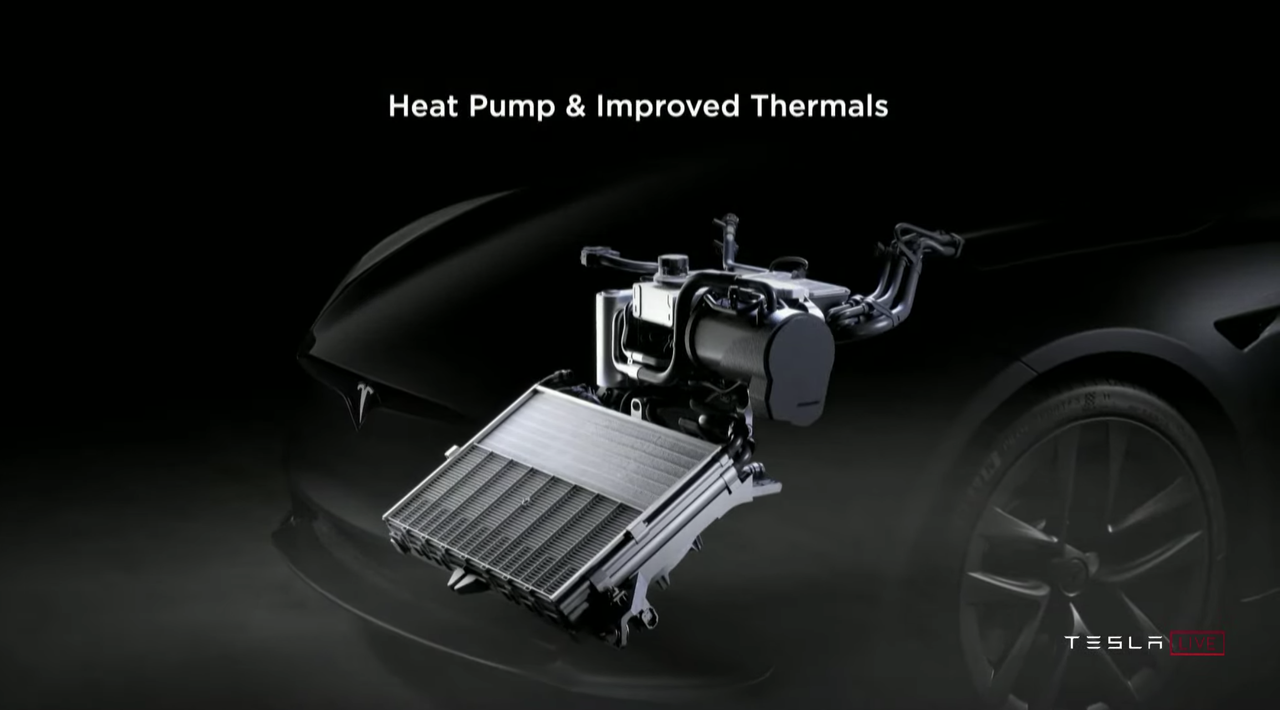
In addition to the radiator, the brand-new thermal management system of Model S Plaid also adds a heat pump, which improves the energy efficiency of the car’s air conditioning by twice in both cooling and heating scenarios compared to the previous system, resulting in a 30% improvement in the vehicle’s winter range.
4680 Has Not Yet Come, But the Range Is Already Good Enough
The Model S Plaid still uses the previous 18650 battery cells instead of the 4680 battery cells which can provide an EPA range of up to 520 miles for the canceled Model S Plaid+. Although the improvement in range is small compared to the old version, let’s take a look at the data since the car has finally arrived.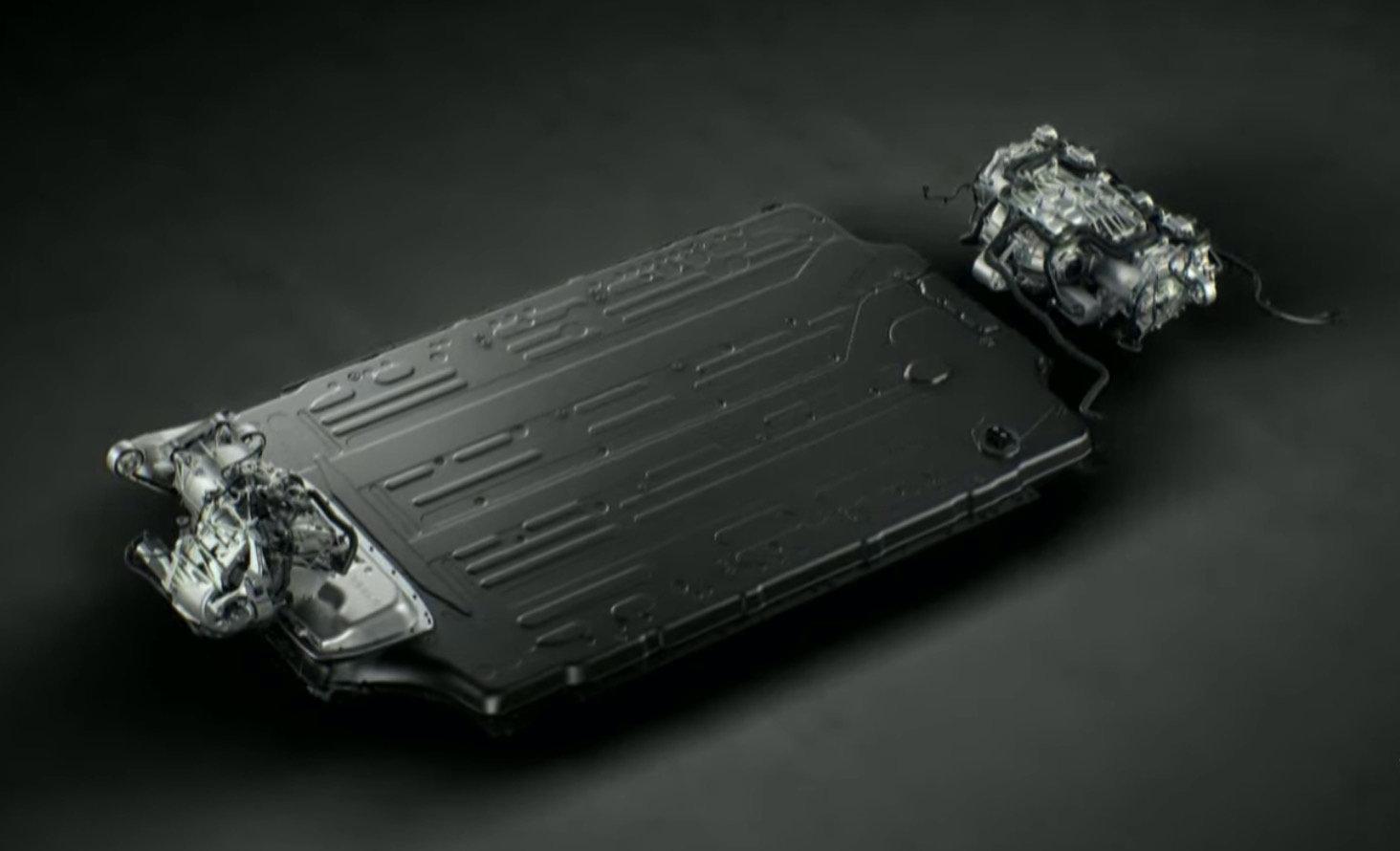
The Model S Plaid has an EPA range of 390 miles (about 627.64 kilometers), and is estimated to be above 750 kilometers when converted to NEDC. Considering that this is a four-door sedan with over 1,000 horsepower, a zero-to-sixty time of 9.23 seconds, and a top speed of 322 kilometers per hour, it’s safe to say the range is excellent.
Furthermore, the improvement in range is partly due to the optimization of wind resistance. The new Model S boasts a wind resistance coefficient of 0.208, which is claimed to be the lowest in the world among mass-produced cars. It’s impressive that the car could make such progress in wind resistance without significant changes to its exterior. However, I’m also curious to know why the EQS with a wind resistance coefficient of 0.20 was excluded by Tesla.
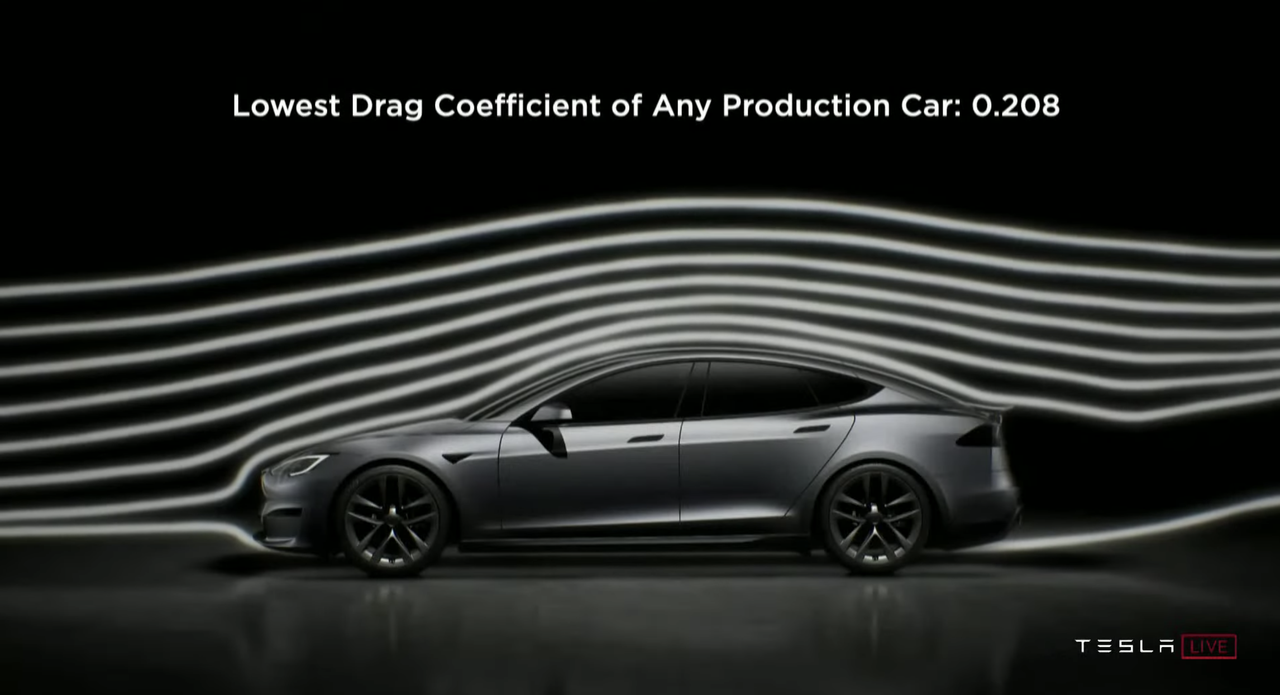

As for charging, the Model S Plaid can charge up to 187 miles (300 kilometers) of EPA range in as little as 15 minutes, and its fast-charging speed is among the highest in mass-produced EVs today.
In addition to “fast,” here are some other features of the new car
Tesla’s Second Model = Second in NHTSA Ranking
“Faster than any Porsche, safer than any Volvo” – Musk’s comments on the Model S Plaid’s performance and safety refer to the confidence it gained from crash tests.
Although the NHTSA’s 5-star rating is excellent, Tesla’s confidence stems from the fact that all five of its models rank within the top five in terms of the lowest passenger injury rates (the lower the rate, the better) since 2011 according to the NHTSA.

The Model S Plaid ranks second in this list, and Musk’s facial expression in the following image nicely conveys his satisfaction with this accomplishment.
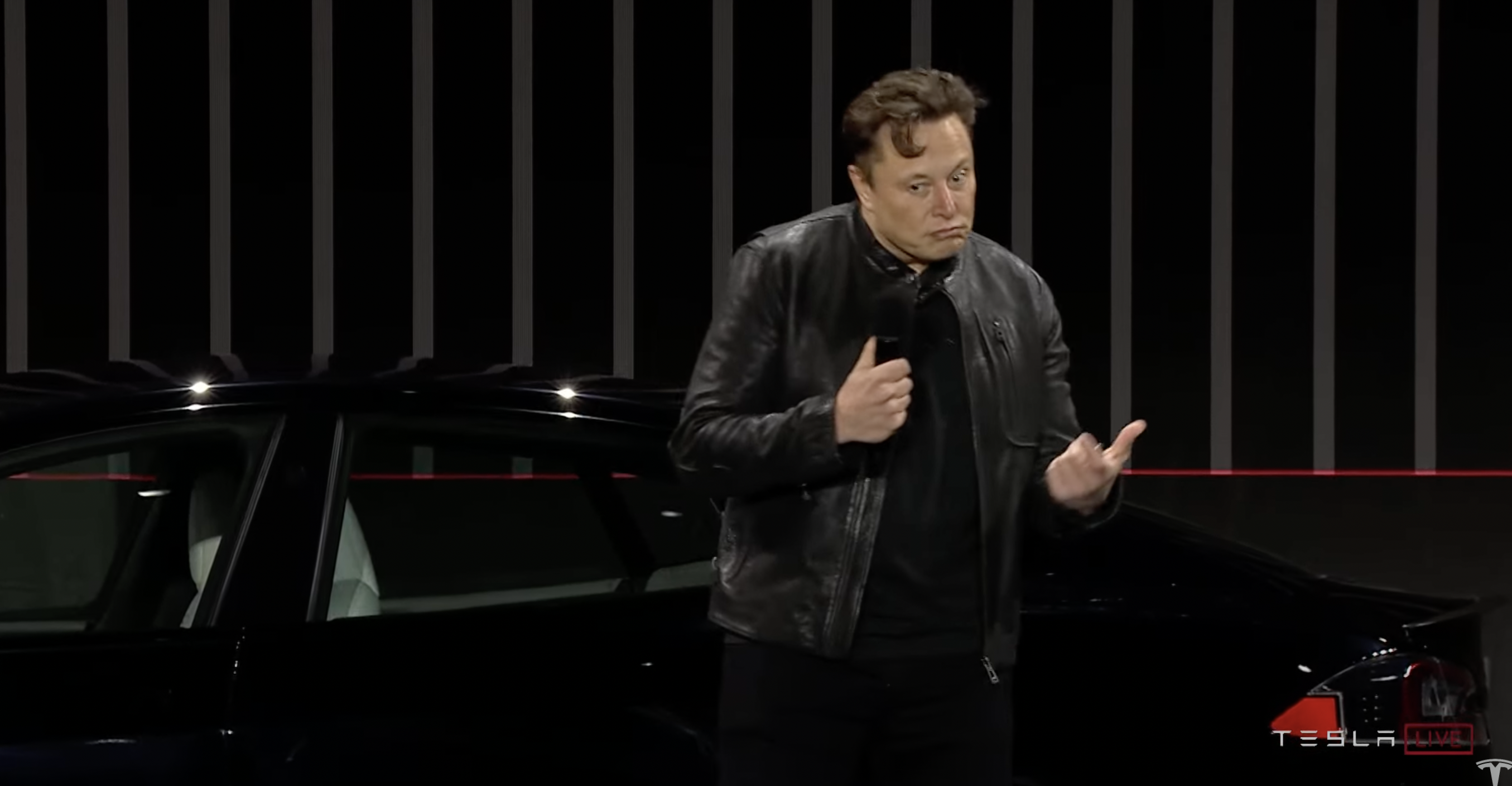 ### The Interior that Tesla Should Have in 2021
### The Interior that Tesla Should Have in 2021
After nine years without significant changes, the interior of the Model S now looks a bit outdated. The new-generation Model S has undergone a major upgrade, including a dramatically different interior.
According to Musk, the previous Model S had limited rear head and leg room. In the new-generation Model S, both areas have been improved, although it may not be at the same level as some of its competitors.
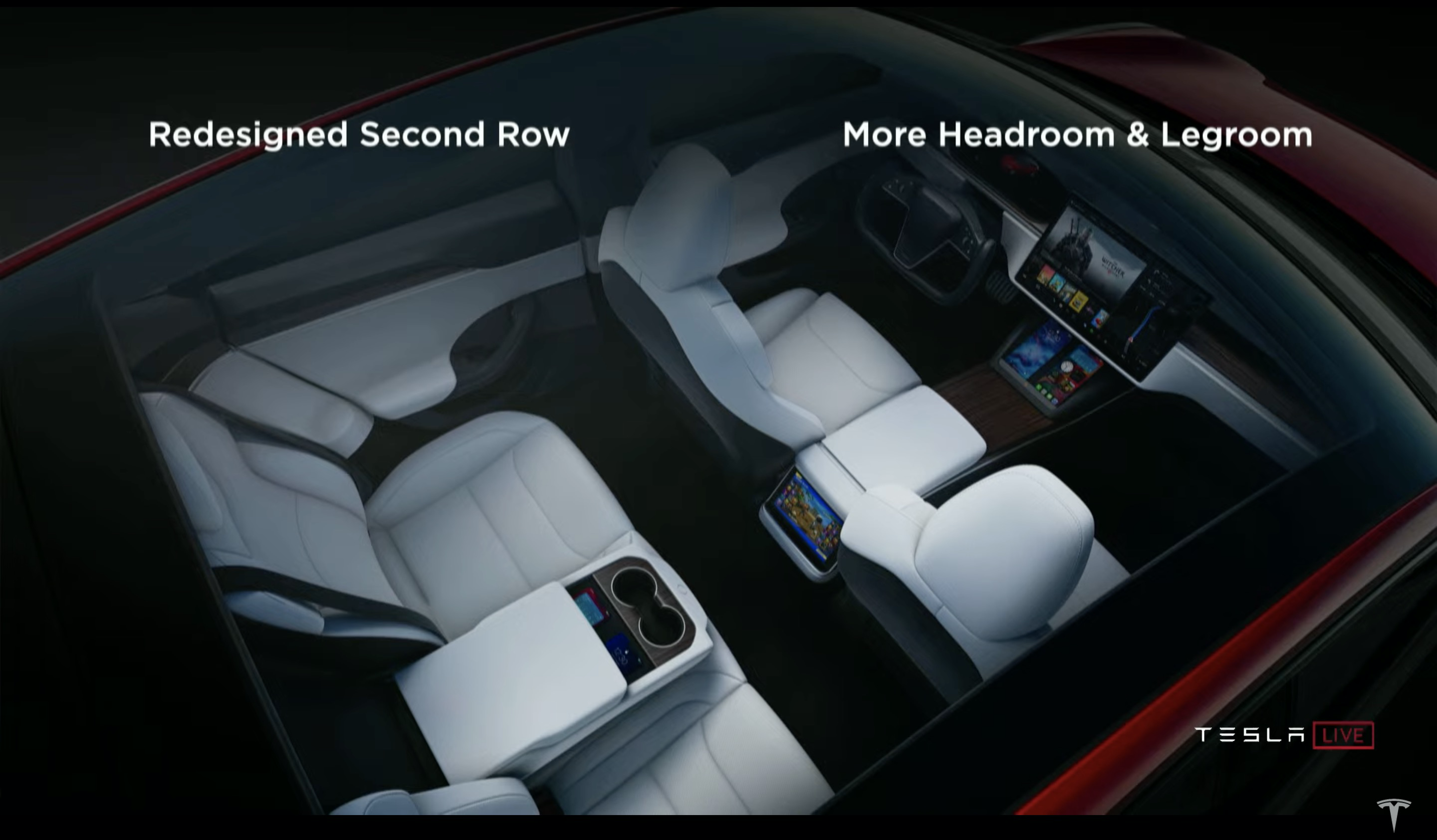
There are two 36 W wireless fast charging pads in the front console and two in the rear center armrest for passengers. Additionally, the new Model S supports multiple Bluetooth connections at the same time.
The new Model S also features a 22-speaker sound system with active noise cancelling and a total power output of 920W, as well as Tesla’s acoustic optimization glass.
The most noteworthy change in the new interior is the next-generation infotainment system and computing power.
The V11 infotainment system adds more gesture controls and menus that can be accessed by swiping from the side. The user interface is more diverse and refined, with many animations that enhance the overall experience, akin to the OS of modern electronic devices.
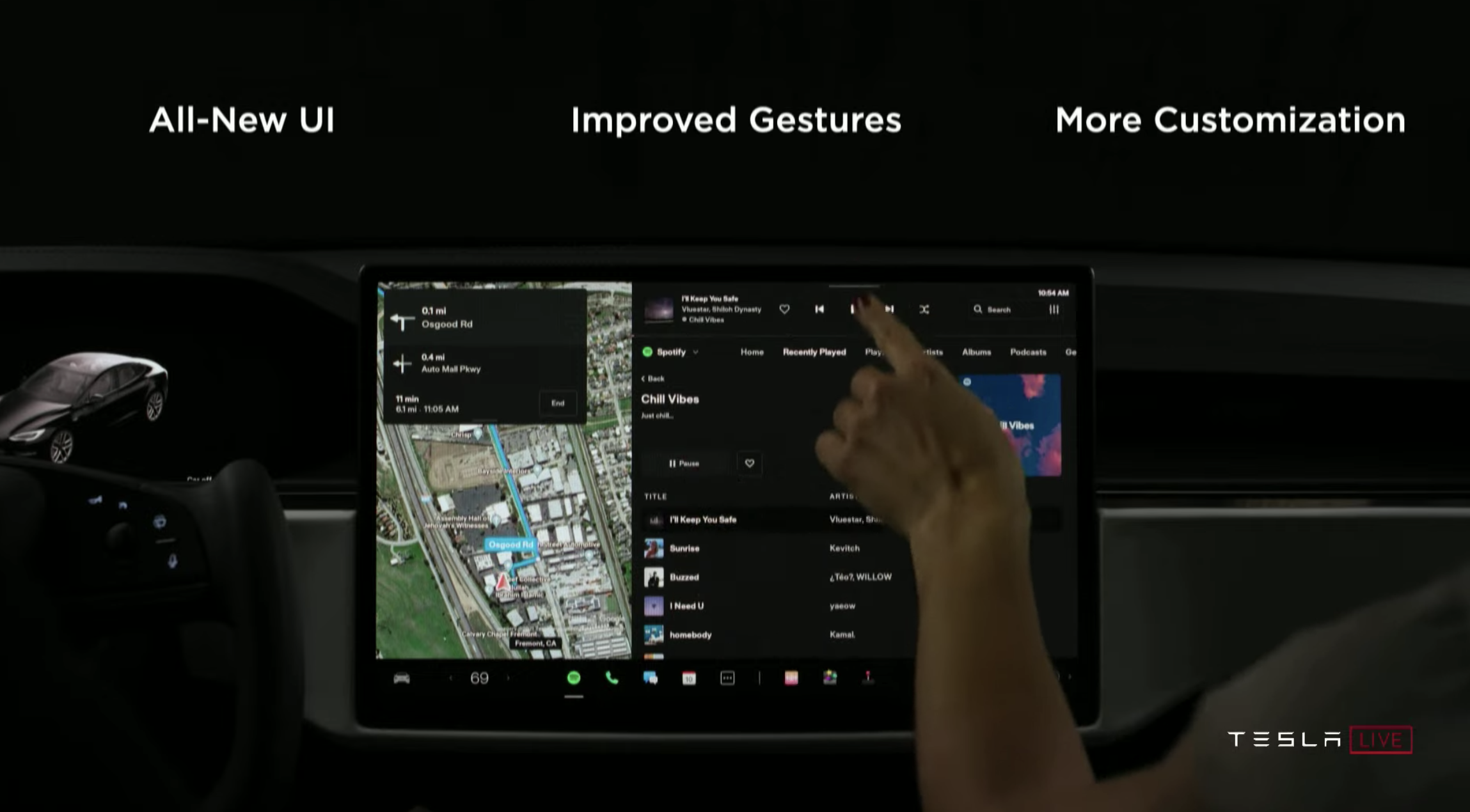
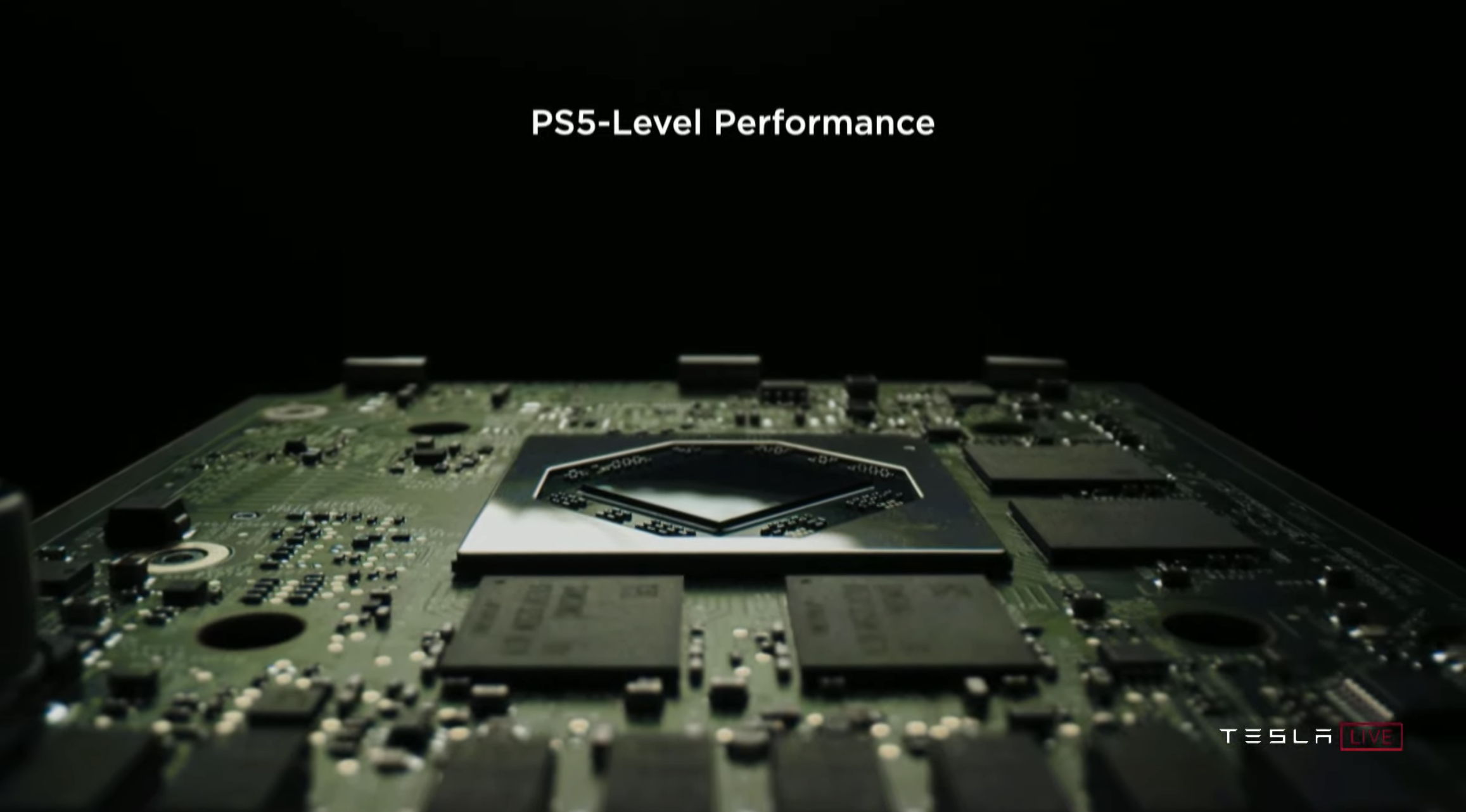
The new hardware features AMD Ryzen series processors and graphics cards, significantly improving performance. The graphics performance is said to be comparable to that of a PS5, and it was even demonstrated that Cyberpunk 2077 can be played on the vehicle’s built-in display.
“Driving a car with this new interior will feel like driving into the future,” as Musk stated.
After Nine Years
The 2012 Model S made Tesla a household name, establishing it as the leader in electric cars with a reputation for being sexy, technologically advanced, and high-performance.# Translation in English Markdown
Musk never hides his pride in Model S. In Tesla’s Autonomy Day in 2019, he said although the Model S had been released for 7 years, it is still the best electric car in the world. No competitor can reach such a high level. He even added “Still waiting”.
However, in 2021, some things have changed. The Mercedes-Benz EQS, Porsche Taycan, Audi e-tron GT, and NIO ET7 in the differentiated competition have dug into the high-end pure electric sedan market, which was originally monopolized by the Model S, from different directions.
Moreover, the Model S will usher in the first direct competitor this year – Lucid Air. This pure electric sedan, which is as large as the Model S, first targeted the soft spots of Model S in terms of space, texture, comfort, and luxury.
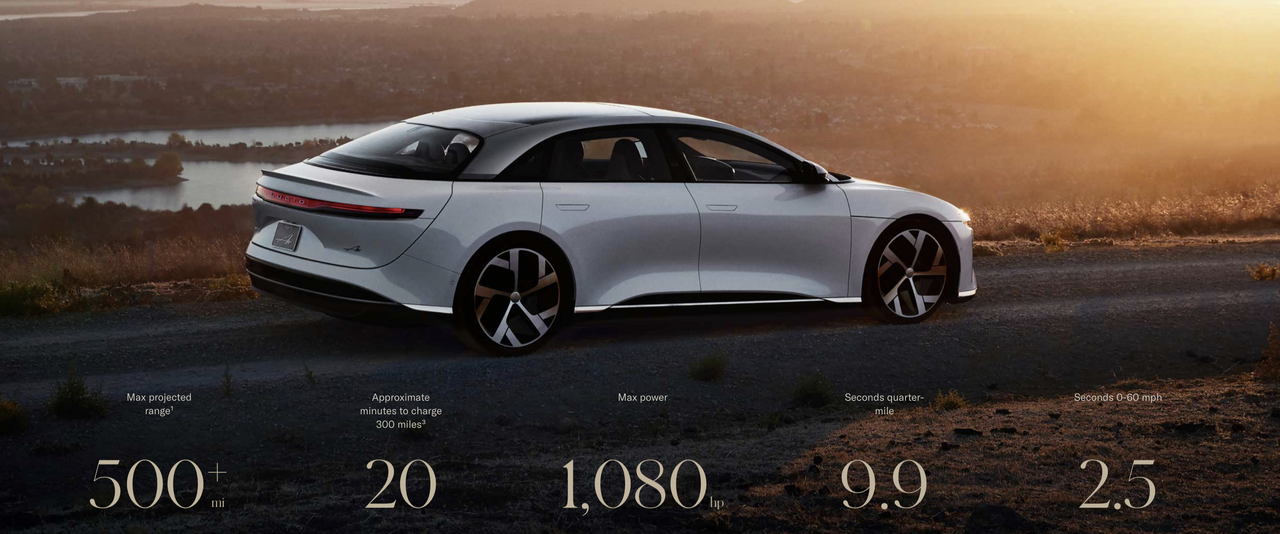
Although the three motors with 1,080 horsepower and the 0-400m acceleration of 9.9 seconds are slightly inferior to the Model S Plaid in terms of performance, Lucid Air, which also uses cylindrical battery cells, achieves 500 miles (804.67 km) of EPA range with the premise of digging out the rear foot space in the battery pack. Its 900 V electrical platform also shows an eye-catching charging speed of replenishing 300 miles (482.8 km) in 20 minutes.
Although Musk once said that “other car companies can also make electric cars with fast acceleration and long range as Tesla does,” Lucid Air seems to have brought this day sooner than most people expected.
However, Musk also mentioned that Tesla’s comprehensive engineering capability is the core advantage that other car companies cannot match in the long run. This may be the biggest disadvantage of Lucid Air, which has not yet undergone production capacity hell and delivery pressure.
But one thing is certain: under the siege of competitors, Tesla’s effort to maintain its top position will need to get bigger and bigger.
Conclusion
Undoubtedly, Model S Plaid is a very attractive car. Like the first-generation Model S, in 2021, it still represents “electricity, sexiness, technology, and performance”.
Even if I look at the screen, I can still feel the novelty and expectation that this product brings me when I see the 20,000 rpm motor, the new UI, the Yoke steering wheel, and AutoShift. This kind of expectation is enough to smooth out its acceleration overshoot and wind resistance bragging.In addition, it has not undergone a major redesign in appearance, nor has it used the 4680 battery pack yet.
However, this may be the intangible but underestimated aspect of Tesla: even though the grand slam has not been played yet, it has already generated enough unlimited creativity to make consumers eager to open their wallets.
This article is a translation by ChatGPT of a Chinese report from 42HOW. If you have any questions about it, please email bd@42how.com.
